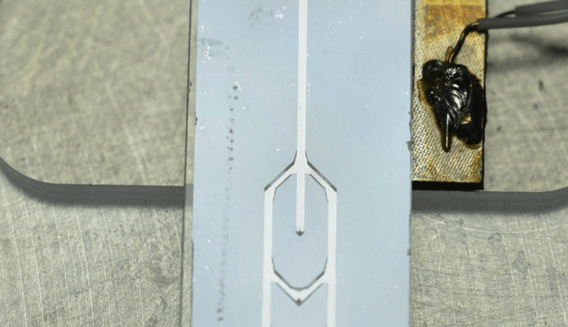Acoustic vibrations for sorting blood cells
August 23, 2016
on
on

Swedish researchers have developed a new microfluidic method of sorting cells as a function of their acoustic properties. These properties are strongly linked to the content and structure of the cells to be analyzed, but independent of their size. The method is thus suitable for discriminating by types of cells without regards to their size. It should permit the development of a pocket sized blood count analyzer (which counts red cells and different types of white cells); an analysis currently only available in specialist laboratories.
While flowing in a microfluidic channel which vibrates at a very high frequency, cells of a certain type adopt a certain position according to how they interact with the frequency of vibration and the density gradient of the liquid. The researchers can thus cause them to take a different route according to their type, so they can distinguish 3 types of white cells: monocytes, lymphocytes and neutrophils, even though monocytes and neutrophils are of similar size.
This technology is also suitable for isolating tumor cells and thus evaluating the progression of a cancer. Different tumor cells can be separated as a function of their acoustic properties.
While flowing in a microfluidic channel which vibrates at a very high frequency, cells of a certain type adopt a certain position according to how they interact with the frequency of vibration and the density gradient of the liquid. The researchers can thus cause them to take a different route according to their type, so they can distinguish 3 types of white cells: monocytes, lymphocytes and neutrophils, even though monocytes and neutrophils are of similar size.
This technology is also suitable for isolating tumor cells and thus evaluating the progression of a cancer. Different tumor cells can be separated as a function of their acoustic properties.
Read full article
Hide full article



Discussion (0 comments)